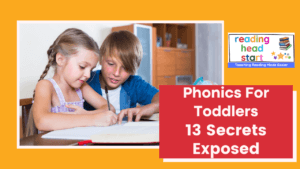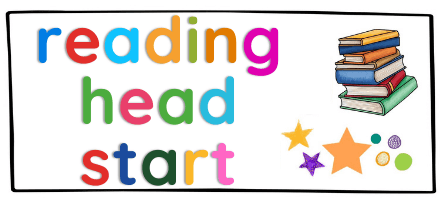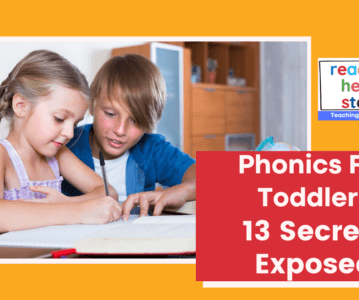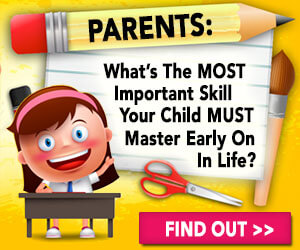Phonics For Toddlers 13 Secrets Exposed
Until we can review why it is important for parents to learn about phonics for toddlers, we must discover just what phonics is. While the bolded captions below may not be well known-hence secrets to some-I’m exposing these as both the elements of phonics and ways you can help a toddler or young child become a great reader.
Phonics is knowing that sounds and also letters have a relationship; aka, it is the link as a part of what we claim as well as what we can read and write. Phonics is the first strategy that young readers will need to sound out words.
In preschool or nursery school, youngsters begin to develop their listening skills to ensure that they can listen to the various sounds in words, laying the foundation to find out names and sounds.
The next action happens in primary school, where kids learn the letters of the alphabet in a set order, as well as the sound of each letter.
As soon as that is discovered, children can start to sound out as well as read short, straightforward words. For instance, youngsters discover that the letter C has the sound of a c as in cat, and also will after that find out just how to mix the remaining letter sounds, c-a-t, to articulate words.
Practice makes perfect, and also after dealing with short as well as simple words, kids’ confidence will certainly expand as well as they will be able to make the relationship of letter sounds to more complicated words, all while appreciating a new love of reading. Below is a list of buzzwords to help you on your path to teach your youngster to read.
Phonics: making use of the sound made by a letter and groups of letters to read words.
Decoding: utilizing the understanding of phonics to sound out as well as read words.
Grapheme: a composed single letter or group of letters, like s, a, or she.
Diagraph: 2 letters that make one sound with each other, as an example sh.
Phoneme: the sound a letter or group of letters make. An instance is the word mat, which has 3 phonemes, m, a, and t.
Sounding Out: utilizing your phonic knowledge to assist you say the sounds within a word; e.g., r-e-d, pronouncing each phoneme.
Blending: reading the sounds in the word entirely to read the entire word; e.g., r-e-d, red or m-o-m, mom.
High-Frequency Words: additionally called common exception words, we use these common words commonly, however aren’t always decodable utilizing phonics. Examples of high-frequency words are, the, one, and where; youngsters are shown to identify these words on sight.
In school, teachers offer children lots of time and also practice when collaborating with phonics. Working with phonics in my classroom, kids read short, easy books, consisting of a certain letter sound or words they are working on, allowing them to grow expertise and also self-confidence towards phonics.
As a mom and dad, it can be a bit of a challenge trying to put together the most effective means to support your kids in the onset of reading, especially since teaching approaches are constantly transforming, and are sure to have actually transformed because you remained in school!
More about phonics for toddlers
Learning about phonics does not need to start and also stop within the walls of the class. As a teacher, I have developed numerous methods to work on phonics with your child from the comfort of your very own house. A few of those methods are:
- Develop a collaboration with the teacher
Ask your child’s teacher just how you can highlight reading and also phonics inside your house and also feel free to reveal any kind of issues you might have. - Listen to your youngster read
If you notice when reading with your kid that they trip over a word, motivate them to utilize phonics to sound it out. If they are still unsure after sounding the word out, don’t be dissuaded, offer the word as well as some encouragement to your kid to get the next one right! - Boost comprehension
When reading with your youngster, take breaks from the story to ask questions like, What do you assume will happen next? or Can you make up a different finishing to the story?. - Reread familiar books.
If you discover your kid wants to reread their preferred book, that’s okay! As a matter of fact, it’s beneficial as it shows a need to read, develops fluency, as well as develops self-confidence in your kid as they can show reading by themselves with little to no help. - Read out loud.
When choosing a book to read, select a book that delights your child as well as their interests or likes, and also, if you can, use various voices for every character! - Spread the happiness of reading.
Maintaining plenty of books and/or publications around the residence will impress upon your youngster how valuable reading is, while growing a lifelong love of reading.
When your kid has discovered how to read words with one of the most usual letter-sound combinations, they will certainly go on to learn various other, harder mixes. With day-to-day practice, your youngster will be well on their quest to reading basically any familiar word in the English language!
Teaching youngsters is not a straightforward job, and if after reading these steps you’re left feeling a little overloaded, no reason to stress, I have a remedy for that too! Click the link listed below to see exactly how Sarah Shepard, a fellow teacher, has taught over 35,000 children exactly how to read with her program Reading Head Start!
Find out how you can help your child become a great reader with Reading Head Start.




